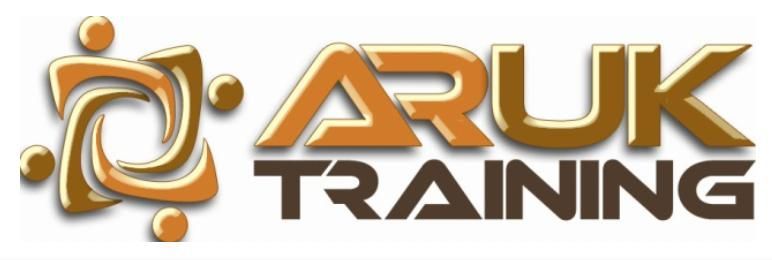
Leading High-Performance Teams
Course ID: 2508044501169EGI
Course Dates : 04/08/25 Course Duration : 5 Studying Day/s Course Location: Istanbul, Turkey
Language: Bilingual
Course Category: Professional and CPD Training Programs
Course Subcategories: Leadership and Management Excellence
Course Certified By: * Projacs Academy
* Professional Training and CPD Programs
Certification Will Be Issued From :
KSA
Course Fees: £3,424.06
Vat Not Included in the price. VAT may vary depending on the country where the course or workshop is held.
Click to Pay
Date has passed please contact us Sales@e-s-hub.com
Course Information
Introduction
The ability to lead high-performance teams is a cornerstone of organizational success in an increasingly competitive and dynamic business environment. Teams that consistently deliver exceptional results are not merely a product of chance; they are cultivated through deliberate leadership, strategic alignment, and a deep understanding of human dynamics. This course is designed to equip participants with the tools, frameworks, and insights necessary to transform their teams into engines of innovation and productivity. By exploring both theoretical foundations and practical applications, participants will gain a comprehensive understanding of what it takes to foster collaboration, drive engagement, and achieve sustainable outcomes.
One of the most pressing challenges in modern organizations is the gap between leadership intent and team performance. Leaders often struggle to balance individual autonomy with collective accountability, leading to inefficiencies, miscommunication, and unmet goals. Research by Katzenbach and Smith in their seminal work on team dynamics highlights the importance of shared goals, complementary skills, and mutual accountability in achieving high performance. Yet, many leaders lack the nuanced understanding required to implement these principles effectively. This course addresses this gap by providing actionable strategies for aligning team objectives, leveraging diverse talents, and fostering a culture of trust and accountability.
Consider the case of a multinational technology firm that struggled with cross-functional collaboration. Despite having highly skilled employees, the organization faced bottlenecks due to siloed departments and unclear priorities. By implementing structured team leadership practices, including role clarification and conflict resolution mechanisms, the company was able to reduce project delivery times by 30%. Such examples underscore the transformative potential of effective team leadership. Participants in this course will learn how to replicate such successes in their own contexts, whether they operate in corporate, nonprofit, or entrepreneurial settings.
The benefits of mastering the art of leading high-performance teams extend beyond immediate operational improvements. For individuals, this skill set enhances career prospects by positioning them as indispensable assets within their organizations. Leaders who can inspire and guide teams are more likely to be entrusted with critical projects and leadership roles. On an organizational level, high-performing teams contribute to increased profitability, improved employee retention, and enhanced reputation. According to Gallup’s State of the Global Workplace report, teams with engaged and motivated members outperform their peers by up to 21% in productivity metrics.
This course draws on established theories such as Tuckman’s stages of group development, Lencioni’s model of team dysfunction, and Hackman’s conditions for team effectiveness. These frameworks provide a robust foundation for understanding the complexities of team dynamics. Additionally, the course incorporates insights from emerging trends in workplace psychology, remote team management, and diversity and inclusion practices. By blending timeless principles with contemporary challenges, the program ensures that participants are equipped to navigate the evolving demands of modern leadership.
Ultimately, the goal of this course is to empower participants to become catalysts for change within their organizations. Whether addressing interpersonal conflicts, aligning team efforts with strategic objectives, or fostering a culture of continuous improvement, the skills acquired in this program will enable leaders to unlock the full potential of their teams. Through interactive exercises, real-world case studies, and expert facilitation, participants will leave with a clear roadmap for building and sustaining high-performance teams.
Objectives
By attending this course, participants will be able to:
Analyze the key characteristics of high-performance teams and assess their current team’s alignment with these traits.
Evaluate team dynamics using frameworks such as Tuckman’s stages of group development and Lencioni’s model of team dysfunction.
Design strategies to enhance communication, collaboration, and accountability within teams.
Implement techniques for managing conflict and resolving interpersonal challenges effectively.
Apply best practices for setting SMART goals and aligning team objectives with organizational priorities.
Develop action plans to foster a culture of trust, inclusivity, and psychological safety.
Measure and track team performance using key performance indicators (KPIs) and feedback mechanisms.
Who Should Attend?
This course is ideal for:
Team leaders, managers, and supervisors seeking to enhance their leadership capabilities.
HR professionals responsible for talent development and organizational culture initiatives.
Project managers tasked with overseeing cross-functional or geographically dispersed teams.
Consultants and coaches working with organizations to improve team performance.
Entrepreneurs and small business owners looking to build cohesive and productive teams.
Training Method
• Pre-assessment
• Live group instruction
• Use of real-world examples, case studies and exercises
• Interactive participation and discussion
• Power point presentation, LCD and flip chart
• Group activities and tests
• Each participant receives a 7” Tablet containing a copy of the presentation, slides and handouts
• Post-assessment
Program Support
This program is supported by:
* Interactive discussions
* Role-play
* Case studies and highlight the techniques available to the participants.
Daily Agenda
The course agenda will be as follows:
• Technical Session 08.30-10.00 am
• Coffee Break 10.00-10.15 am
• Technical Session 10.15-12.15 noon
• Coffee Break 12.15-12.45 pm
• Technical Session 12.45-02.30 pm
• Course Ends 02.30 pm
Course Outlines
Foundations of High-Performance Teams
Defining high-performance teams: Characteristics and benchmarks.
Understanding team dynamics: Stages of development and common challenges.
The role of leadership in shaping team culture and values.
Case study analysis: Lessons from successful high-performance teams.
Day 2:
Building Trust and Psychological Safety
Importance of trust in fostering collaboration and innovation.
Strategies for creating psychological safety within teams.
Addressing barriers to trust: Bias, stereotypes, and microaggressions.
Interactive workshop: Role-playing scenarios to practice trust-building techniques.
Day 3:
Communication and Conflict Resolution
Principles of effective communication in team settings.
Identifying and managing sources of conflict within teams.
Techniques for facilitating constructive dialogue and consensus-building.
Group activity: Resolving simulated conflicts using structured approaches.
Day 4:
Goal Setting and Performance Management
Setting SMART goals and cascading objectives across teams.
Aligning team goals with organizational vision and mission.
Tools and methods for tracking team performance and progress.
Best practices for providing feedback and recognizing achievements.
Day 5:
Sustaining High Performance and Continuous Improvement
Fostering a culture of learning and adaptability within teams.
Leveraging diversity and inclusion to drive innovation and creativity.
Strategies for maintaining momentum and avoiding burnout.
Developing a personal action plan for ongoing team leadership growth.



















































